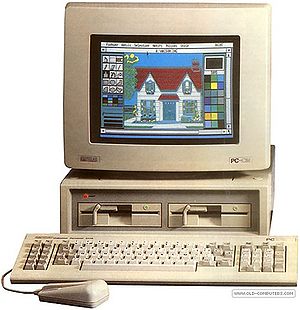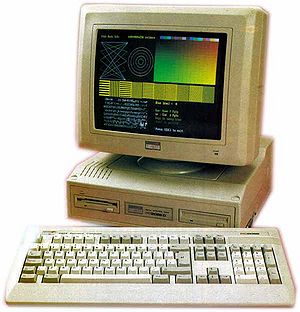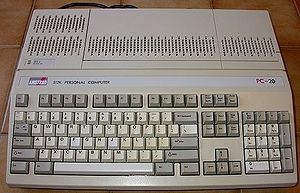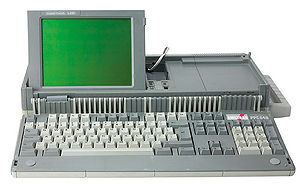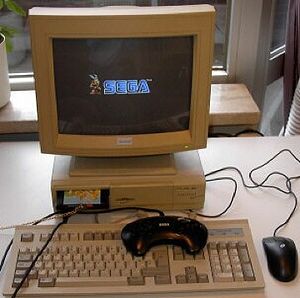Difference between revisions of "PC"
| Line 35: | Line 35: | ||
* MegaPC (1993) | * MegaPC (1993) | ||
| − | + | And many others. | |
== Links == | == Links == | ||
Revision as of 18:39, 17 December 2010
PC stands for "Personal Computer". The term was coined in the 70s for machines that are used directly by one person at a time. This was a huge paradigm shift over the big and expensive mainframe computers that were common at the time. Early examples of Personal Computers include the Apple II and the Commodore PET.
Nowadays the term PC usually refers to IBM compatible PCs. IBM built the original IBM PC in 1981 later followed by the IBM XT and the IBM AT. Since IBM decided to open up the design other manufacturers started to sell clones of the original IBM PC and it's successors, so called "IBM compatibles". This allowed the IBM PC architecture to quickly become the industry standard for Personal Computers intended for business oriented taks. The IBM PC is the ancestor of most modern desktop and laptop computers. In the early 80s, PCs were rather expensive and not really suited for multimedia. They were not often used as home computers. This changed throughout the 90s when better graphics and sound cards appeared, PCs became cheaper and modern operating systems made them easier to use.
Although the name Amstrad CPC is an abrivation for Color Personal Computer, the Amstrad CPC was not an IBM compatible PC. Unlike many other homecomputers of the era the Amstrad CPC shared many components wich also was found in first IBM PCs and compatibles of the 80's
- CRTC (found om CGA cards)
- FDC The PC used the same Floppy Disc Controler.
- PPI Same programmable parallel interface as the CPC
Amstrad and PCs
List of Amstrad PCs
- PC1512 (1985)
- PC1640 (1987)
- PC2086
- PC20
- MegaPC (1993)
And many others.
